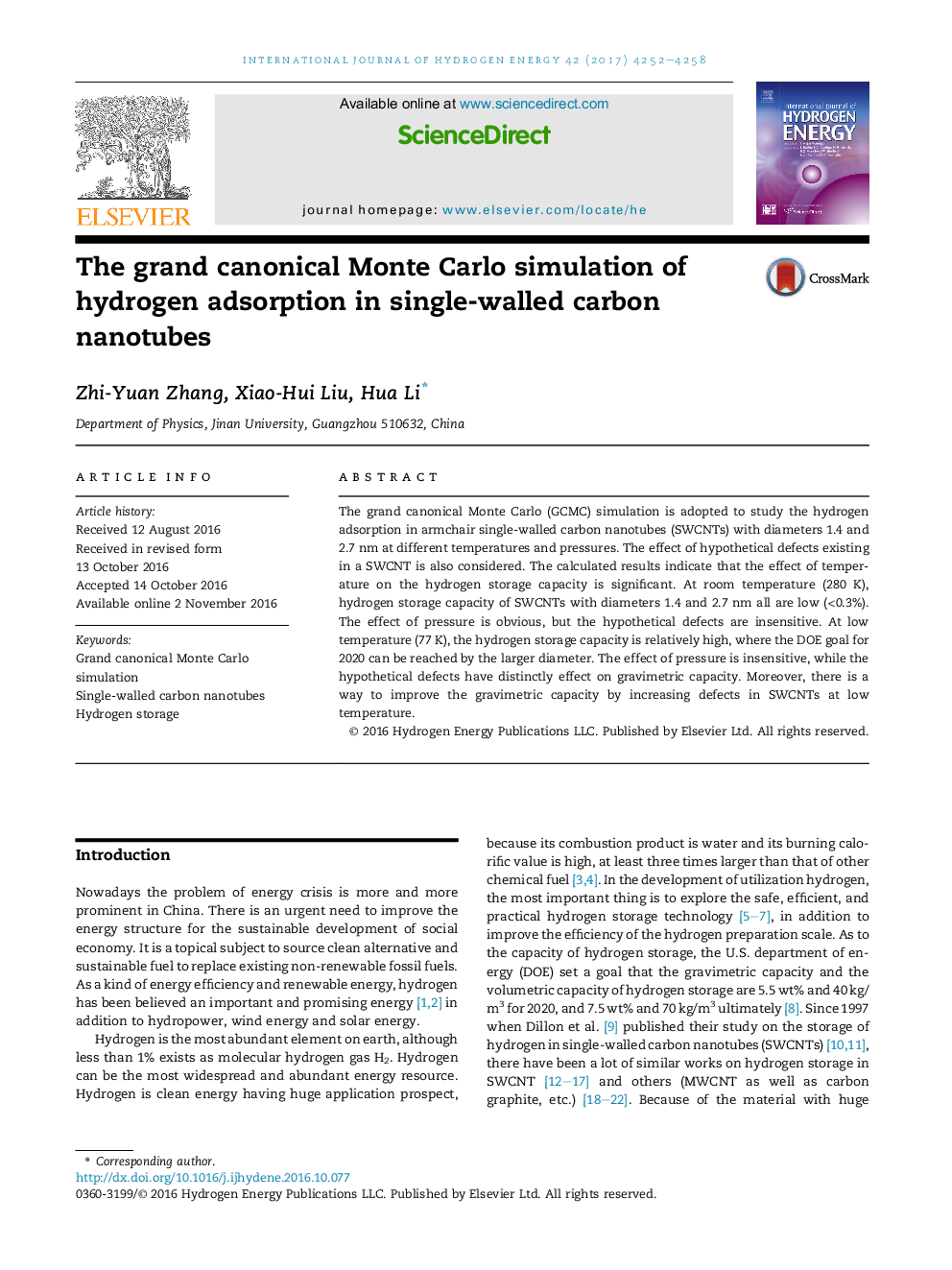| Article ID | Journal | Published Year | Pages | File Type |
|---|---|---|---|---|
| 5146344 | International Journal of Hydrogen Energy | 2017 | 7 Pages |
â¢Temperature is an important factor in hydrogen storage of SWCNTs.â¢Hydrogen storage capacity is <0.3% at 280 K, but attains the DOE goal at 77 K.â¢Hydrogen storage capacity of SWCNTs is insensitive to pressure at low temperature.â¢The gravimetric capacity is insensitive to hypothetical defects at room temperature.â¢The gravimetric capacity increases with increasing defects at low temperature.
The grand canonical Monte Carlo (GCMC) simulation is adopted to study the hydrogen adsorption in armchair single-walled carbon nanotubes (SWCNTs) with diameters 1.4 and 2.7Â nm at different temperatures and pressures. The effect of hypothetical defects existing in a SWCNT is also considered. The calculated results indicate that the effect of temperature on the hydrogen storage capacity is significant. At room temperature (280Â K), hydrogen storage capacity of SWCNTs with diameters 1.4 and 2.7Â nm all are low (<0.3%). The effect of pressure is obvious, but the hypothetical defects are insensitive. At low temperature (77Â K), the hydrogen storage capacity is relatively high, where the DOE goal for 2020 can be reached by the larger diameter. The effect of pressure is insensitive, while the hypothetical defects have distinctly effect on gravimetric capacity. Moreover, there is a way to improve the gravimetric capacity by increasing defects in SWCNTs at low temperature.
Graphical abstractDownload high-res image (192KB)Download full-size image
